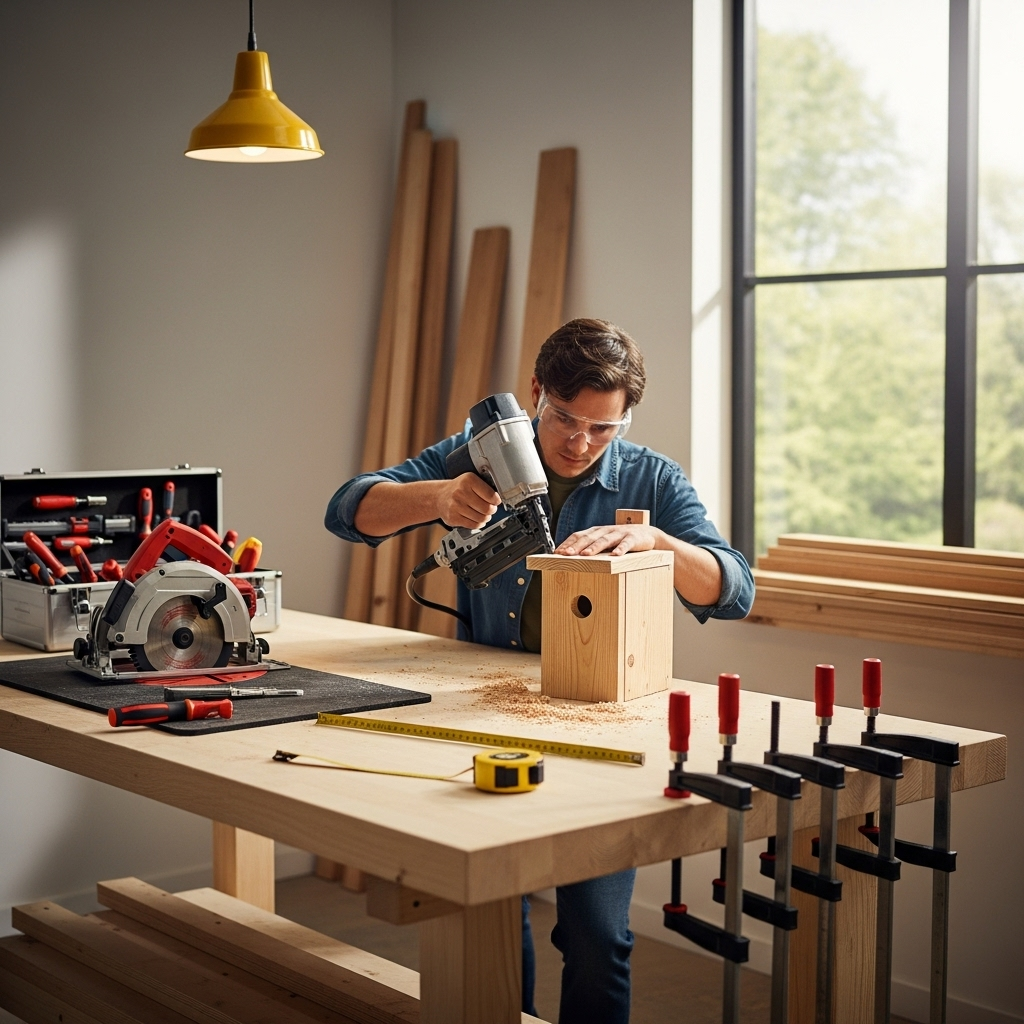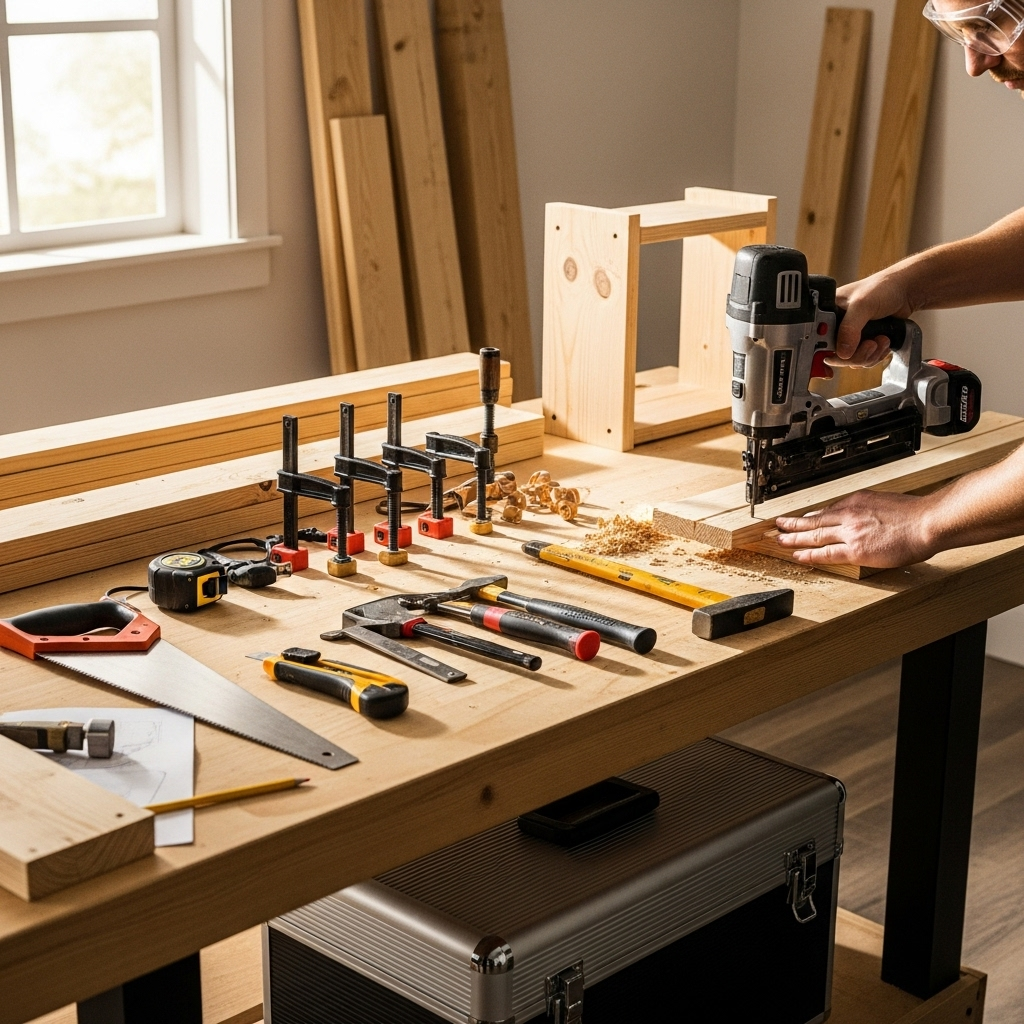Quick Summary: Create stunning and affordable birch twig centerpieces with simple techniques. Gather twigs, arrange them creatively, and add personal touches for a rustic, charming look that elevates any table without breaking the bank.
Hey there, DIYers! Jack Shaffer here from Nailerguy. Ever look at those gorgeous table settings in magazines and think, “Wow, that looks expensive!”? Sometimes, the most beautiful decor doesn’t need a hefty price tag. Today, we’re diving into something super simple and incredibly effective for adding natural charm to your home: cheap birch twig centerpieces. We’ll show you how to turn everyday materials into stunning focal points for your dining table, coffee table, or even a special event. It’s all about smart, budget-friendly decorating, and you might be surprised at what you can create with just a few natural bits and bobs. Let’s get those creative juices flowing and make your space shine on a dime!
Table of Contents
Why Birch Twigs Are Your New Best Friend for Decor
Birch twigs offer a unique blend of rustic elegance and natural beauty. Their clean, white bark with subtle black markings creates a striking visual that pairs well with almost any decor style, from modern farmhouse to minimalist. They’re also readily available (and often free!) if you know where to look, making them a champion of budget-friendly decorating. Unlike fussy floral arrangements that wilt and fade, birch twigs are long-lasting, offering enduring charm. Plus, working with them is incredibly straightforward, which is music to my ears as someone who loves making DIY projects accessible to everyone.
Think about it: you can gather twigs after a windy day or prune a birch tree (ethically, of course!) and have the foundation for countless decor pieces. It’s a sustainable choice, too, giving a second life to natural materials often overlooked. This article is your all-access pass to unlocking the potential of these humble branches. We’ll cover gathering, preparing, and styling them into centerpieces that will have your guests asking where you bought them.
Gathering Your Birch Twigs: The Treasure Hunt

The first step to crafting beautiful birch twig centerpieces is to gather your materials. This part is like a fun outdoor scavenger hunt. You don’t need fancy tools, just a keen eye and an appreciation for nature’s free decor store!
Where to Find Birch Twigs:
- Your Own Backyard: If you have birch trees, check around their bases, especially after a storm. Fallen branches are perfect.
- Local Parks and Nature Trails: Many parks have areas where fallen branches are allowed to be collected. Always check local regulations first to ensure you’re not breaking any rules. A quick search for your local park’s rules or contacting the park authority can save you potential trouble.
- Wooded Areas: Explore common wooded areas near your home. Look for areas where trees have been recently cleared or where natural pruning has occurred.
What to Look For:
- Healthy Twigs: Opt for branches that are dry but not brittle. You want them flexible enough to arrange without snapping.
- Interesting Shapes: Look for twigs with natural curves, forks, or unique lengths. These add character to your arrangements.
- Clean Bark: While some dirt is expected, try to find twigs with relatively clean bark. You can clean them later if needed.
- Variety of Sizes: Having a mix of lengths and diameters will give your centerpieces depth and dimension.
Ethical Gathering Tips:
It’s important to be a good steward of nature. Always follow these guidelines:
- Never cut live branches from healthy trees without permission. This can harm the tree.
- Only collect fallen branches. Think of it as nature’s way of giving you materials.
- Take only what you need. Don’t strip an area bare. Leave plenty for the ecosystem.
- Be aware of your surroundings and any local rules or restrictions regarding plant material collection. The U.S. Forest Service provides general guidelines on collecting forest products, which can be a good starting point for understanding responsible foraging: US Forest Service Collection Guidelines.
Preparing Your Birch Twigs: Clean and Ready
Once you’ve gathered a nice haul of birch twigs, a little preparation goes a long way in making them look polished and ready for display. This isn’t complicated, but it’s a crucial step for a professional finish.
Step-by-Step Preparation:
- Inspection: Lay out your twigs and give them a good look. Remove any loose bark, dirt clumps, or small, extraneous twigs that don’t add to the aesthetic you’re going for. A soft brush or a damp cloth works well here.
- Cleaning: For dirt that’s a bit more stubborn, use a damp cloth to gently wipe down the twigs. If there’s any sticky residue or significant grime, you can use a mild soap solution, but make sure to rinse the twigs thoroughly with a clean, damp cloth afterward. Avoid soaking the twigs, as this can make the wood swell or potentially encourage mold growth once dried.
- Drying: Spread the cleaned twigs out in a well-ventilated area, preferably in indirect sunlight. Let them dry completely. This might take a day or two, depending on humidity and how damp they were. Ensure they are bone dry before proceeding to the next steps to prevent any issues down the line.
- Optional: Sealing (for longevity): If you plan to keep your centerpieces for a very long time or are concerned about splitting, you can apply a clear sealant, like a matte spray sealant or a decoupage medium. This can help protect the bark and the wood. Test this on a spare twig first to ensure it doesn’t alter the natural look too much.
Simple Birch Twig Centerpiece Ideas for Every Occasion

Now for the fun part – turning those prepared twigs into beautiful focal points! These ideas are designed to be easy, budget-friendly, and adaptable to your personal style.
1. The Rustic Bundle
This is the simplest and quickest way to create a striking centerpiece. It’s all about letting the natural beauty of the twigs shine.
What You’ll Need:
- A collection of birch twigs of varying lengths
- Twine, jute string, or a decorative ribbon
- Optional: A small vase or a rustic container (like a Mason jar, tin pail, or wooden box)
How to Make It:
- Gather a generous bundle of twigs. Imagine you’re making a bouquet.
- Arrange them so the tops are roughly even, or stagger them slightly for visual interest.
- Tie the bundle securely with twine or ribbon a few inches from the bottom. Ensure it’s snug but doesn’t crush the twigs.
- Place the bundle in a vase or container, or stand it on its own on your table runner.
- Pro Tip: For a little extra flair, tuck in a few dried sprigs of lavender, eucalyptus, or simple greenery before tying the bundle.
2. Twig-Wrapped Vases or Jars
This method adds texture and rustic charm to plain containers you might already own.
What You’ll Need:
- Clean twigs (you might need longer, more flexible ones for this)
- Hot glue gun and glue sticks (low-temp is safer if you’re new to it)
- A plain vase, jar, or even a tin can
- Scissors
How to Make It:
- Cut your twigs to roughly the height of your container. You might want to trim them slightly longer than the final desired height.
- Start hot-gluing the twigs vertically around the outside of your container. Place the first twig, apply a line of glue on the inside top edge and bottom edge of the container where the twig will touch, and press the twig firmly into place.
- Continue adding twigs, pressing them close together so there are no gaps. Work your way around the entire container.
- Once the glue is dry, carefully trim any excess twig length sticking out from the top or bottom using sharp scissors or small pruning shears.
- Variations: You can wrap horizontally instead of vertically, or use shorter twig pieces to create a mosaic effect. Paint the twigs white for a monochromatic look or add a touch of metallic paint for glamour.
3. Birch Twig “Wreath” Base
Create a simple, elegant base that can be adorned with candles, greenery, or seasonal items.
What You’ll Need:
- Several longer, flexible birch twigs
- Wire or strong twine
- Wire cutters (if using wire)
- Optional: A hot glue gun
How to Make It:
- Bend your longest, most flexible twigs into a circular shape. You might need to gently encourage them into a curve.
- Start weaving and overlapping twig ends, securing them as you go with twine or wire. Wrap it tightly to create a sturdy ring. If using wire, twist the ends together to secure.
- Continue adding twigs until you have a wreath form of the desired thickness and diameter. You can make it as dense or as sparse as you like.
- Add a few dabs of hot glue to reinforce any weak spots and ensure the twigs stay put.
- Place the twig wreath on your table. You can then arrange pillar candles, fairy lights, or seasonal greenery within the center.
- Seasonal Touch: For fall, add mini pumpkins and gourds. For winter, weave in pinecones and faux berries.
4. Birch Twig Garland
Drape this over your mantel, string it across a buffet table, or even use it as a unique runner.
What You’ll Need:
- Lots of smaller birch twigs, cut to similar lengths (e.g., 6-10 inches)
- Strong twine or cord
- A drill with a small drill bit (slightly larger than your twine)
- Optional: Beads, pinecones, or other natural elements
How to Make It:
- Carefully drill a small hole through each twig, about 1/2 inch from one end. Ensure the drill bit doesn’t split the twig. It helps to steady them against a scrap piece of wood.
- Cut your twine to the desired garland length, adding a few extra inches for tying.
- Thread your first twig onto the twine, sliding it down until it’s close to the end. Tie a knot below the twig to secure its position.
- Continue threading twigs onto the twine, spacing them evenly or clustering them for different effects. You can knot the twine below each twig, or simply ensure they are tight against each other.
- If adding beads or other elements, thread them between the twigs.
- Tie a knot at the beginning and end of the garland securely.
- Tip: You can also create a more free-form garland by tying small bundles of twigs together with twine and then connecting these bundles with longer strands of twine.
Styling Your Birch Twig Centerpieces: The Finishing Touches
The real magic happens when you combine your twig creations with other elements. Styling is where you inject your personal flair and make the centerpiece truly your own. Here are some ideas to get you started.
Pairing with Candles:
Candles and twigs are a match made in rustic heaven. The warm glow of candlelight enhances the natural texture of the birch. Pillar candles, taper candles in simple holders, or even battery-operated fairy lights woven through twig arrangements create wonderful ambiance.
Adding Greenery and Florals:
Don’t be afraid to mix in some live or faux greenery. Eucalyptus, pine sprigs, ferns, or even simple wildflowers can add color and contrast. Tuck them into twig bundles or weave them around twig wreaths. Seasonal flowers can also be incorporated for special occasions. A good source for artificial greenery that looks realistic is often found at reputable craft stores or dedicated online retailers.
Incorporating Natural Elements:
Expand on the natural theme! Pinecones, acorns, moss, small stones, or even decorative gourds (especially for fall) can complement your birch twigs beautifully. Arrange these elements around the base of your twig arrangement or incorporate them directly into the design.
Playing with Containers:
The vessel you choose can dramatically change the look. Clear glass vases allow the twigs to appear as if they are floating. Rustic wooden boxes or crates add to the farmhouse vibe. Metal buckets or galvanized containers offer an industrial-chic feel. Even simple ceramic bowls can provide a clean, modern backdrop.
Seasonal Adaptations:
Birch twig centerpieces are incredibly versatile. For a winter look, add cranberries and small ornaments. For spring, incorporate pastel flowers or delicate greenery. Fall calls for pumpkins, leaves, and warm-toned elements. Summer might feature brighter flowers and lighter greenery.
Tools of the Trade: What You Might Need (Keep it Simple!)

As a tool guy, I appreciate having the right equipment, but for birch twig centerpieces, you really don’t need much. The focus is on natural materials and simple techniques.
Here’s a breakdown of what might be helpful:
| Tool | Why You Need It | Jack’s Tip |
|---|---|---|
| Pruning Shears or Sturdy Scissors | To trim twigs to size and clean up ends. | A good pair of bypass pruners will make cutting thicker branches much easier and cleaner than struggling with scissors. For thinner twigs, sharp craft scissors work fine. |
| Hot Glue Gun & Glue Sticks | For securing twigs to vases, jars, or each other. | A low-temperature glue gun is safer for beginners. Always use it on a protected surface and be mindful of where your fingers are! |
| Twine, Jute, or Ribbon | To bundle twigs or tie elements together. | Natural fibers like jute or twine enhance the rustic look. Satin ribbons can add a touch of elegance. |
| Measuring Tape or Ruler | For consistent spacing or ensuring pieces fit your space. | Not strictly necessary, but helpful for planning out larger projects like garlands. |
| Drill & Small Drill Bit | Optional, for creating twig garlands. | Use a bit just slightly larger than your twine. Go slow and steady to avoid splitting the wood. A drill press can offer more stability if you have one, but a hand drill works too. You can find great resources on basic drilling techniques at sites like Family Handyman. |
| Cloth Gloves | To protect your hands while gathering and handling twigs. | Some twigs might have rough edges or sap. Gloves keep your hands clean and comfortable. |
See? Nothing too complicated. Most of these are items you might already have around the house or can pick up cheaply.
Budget Breakdown: The Amazing Value
Let’s talk turkey – or rather, twigs! The primary reason these centerpieces are genius budget buys is the cost of the main material: often free!
Material Cost Comparison:
Consider a typical store-bought centerpiece. Even a small, simple one can run anywhere from $20 to $50 or more, especially if it uses dried flowers, unique containers, or complex arrangements. Artificial arrangements can also be costly, and fresh flowers, while beautiful, are a temporary expense.
With birch twigs:
- Twigs: $0 (gathered) or very minimal if purchased dried.
- Containers: $0 (repurposed jars, cans) to $5 (a simple vase from a thrift store).
- Adhesives/Binders (glue, twine): Typically under $5 for a good supply that can be used for multiple projects.
- Optional Embellishments (pinecones, fairy lights): Varies, but can be kept very low with found items or budget-friendly lighting.
This means you can create multiple, beautiful centerpieces for the cost of one store-bought item. It’s smart decorating that allows you to achieve a high-end look without the high-end price tag, which is exactly what I love about DIY.
Long-Term Value:
Unlike fresh flowers, birch twig centerpieces have longevity. Once created, they can be used season after season, with minor adjustments or additions. This makes them an investment in your home’s decor rather than a fleeting expense.
Maintaining Your Birch Twig Centerpieces

One of the best parts about using natural materials like birch twigs is their low maintenance. Unlike fresh plants or cut flowers, they don’t require watering or special care.
Simple Care Tips:
- Dusting: A gentle dusting with a soft brush or a microfiber cloth every so often will keep your centerpieces looking their best. You can also use the low-suction setting on your vacuum cleaner with a brush attachment.
- Avoid Moisture: Keep your arrangements away from direct sources of humidity or water, as this can cause the